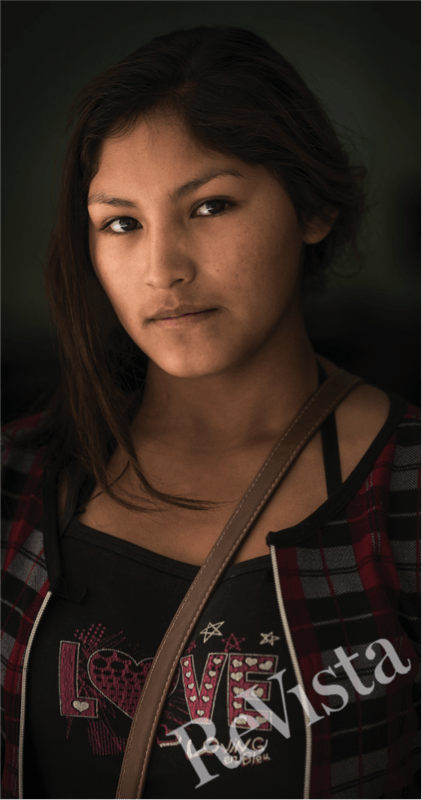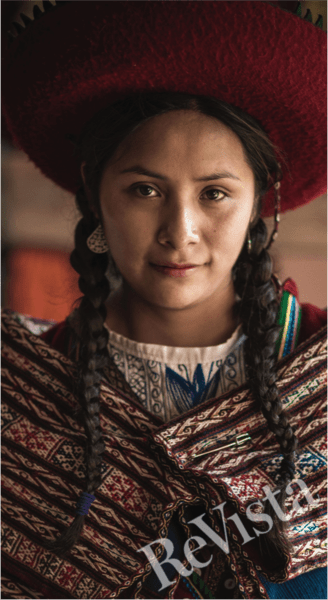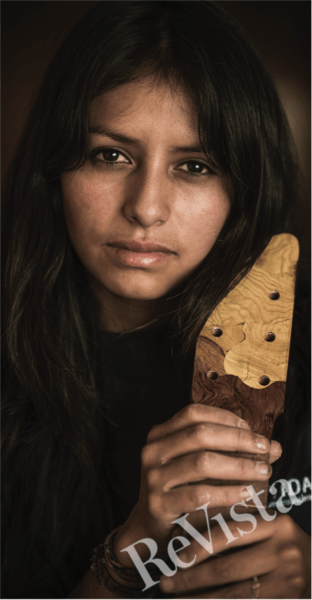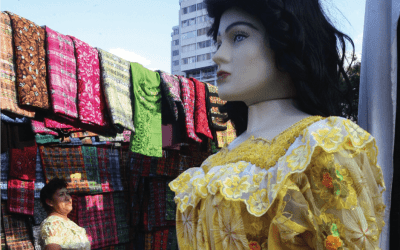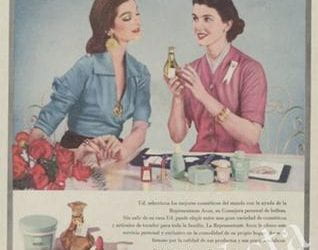The Politics of Beauty
When one talks to people in Latin America about beauty, it is never simply about vanity, self-care or individual consumption. Beauty in Latin America always seems to have larger implications, inducing hopes for upward mobility, invoking national ideals of beauty, or even suggesting beauty as a standard for citizenship. To observers of Latin America, beauty can tell us much about this region’s ongoing inequalities and the way the body’s attractiveness, or lack of it, acquires sociopolitical meanings.
Let me begin, however, with the story of Solange, whom I met at the reception area of a public hospital in Belo Horizonte, Brazil. Solange (I’m not using her real name to protect confidentiality) was there to see if her nose job would be finally approved by the medical team that oversaw plastic surgery procedures. She told me that having a different nose was a dream of hers since she was a teenager, but until recently she had believed plastic surgery was a luxury only the wealthy could afford. A few months ago, however, she had been encouraged to seek out this hospital by two friends of hers who also worked in retail. Those two friends had been able to get approval for a free breast lift and a free tummy tuck, fully covered by the universal healthcare system, and were delighted with the results. Although Solange realized that she would have to go through many hoops, and she would be one more name on a very long waiting list, she was willing to endure any sacrifices. Echoing the poet Vinicius de Moraes, she said that “beauty is fundamental,” but she added a very practical reason for its importance, “in this country, one needs a good appearance to find good jobs.” It did not bother her, she assured me, that she would be studied by the medical residents who carried out surgeries at this hospital, because it represented her small contribution towards making Brazilian plastic surgery “number one in the world.” With her new, slimmer nose, Solange claimed, she would suffer less discrimination while seeking work, and she might be able to find a better job than retail sales, which paid very little.
When Solange’s name was called, she allowed me to witness the consultation she had with a young plastic surgeon, still completing his medical residency. She handed over an envelope with the results of a tomography this doctor had requested during a previous visit, and which confirmed that Solange had a very slightly deviated septum, which did not obstruct her respiratory airways. The surgeon told Solange that the tomography results by themselves were not enough evidence to justify the surgery, but if she consistently complained of difficulty breathing through her nose, he could get her an expedited approval—her story had to remain consistent when she booked a time for the surgery, and when she checked in at the hospital. A little while later the surgeon explained to me that Brazil’s universal healthcare system would only cover plastic surgeries that addressed a demonstrated health need, but aesthetic surgeries were routinely approved by relabeling them as medically necessary reconstructive surgeries. If the hospital administrators were aware of this informal practice, they turned a blind eye to it, because they knew it was important for patients who desired beauty and for medical residents who needed to learn to perform the aesthetic surgeries that were valuable in private medical practice. Solange’s case was valuable to him because it would allow him to learn how to do corrective surgery on what he described as a “negroid nose,” a condition that he said was typical among the racially-mixed Brazilian population.
In Brazil, the interests of low-income patients and surgeons-in-training intersect on the operating table in the pursuit of beauty. When one talks to patients and to surgeons, however, two different explanations emerge for why beauty matters. Low-income patients like Solange invariably invoke “good appearance” as central to any hope of upward mobility in society—beauty is imagined as providing new job opportunities, opening doors that were formerly closed, and guaranteeing, in general, that a person will be treated fairly in society. The concern for beauty allows these patients to complain about the many ways they feel Brazilian society treats people differently based on their appearance—beauty’s blessings seem to simply be bestowed on the rich, but are denied to those with wider noses, those with ugly teeth, those women whose labor as mothers take a toll on their bodies, or those workers whose bodies are marked by the long hours spent per day in grueling jobs. In Brazil, as in general in Latin America, beauty has so much meaning to women because it is a bodily sign that condenses the race, class and gender inequalities they deal with on a daily basis, a “dictatorship of beauty” that determines which bodies have value and which bodies do not. Plastic surgery seems an acceptable risk in comparison to the abject threat of ugliness.
For plastic surgeons, on the other hand, their discipline has a larger, loftier goal of improving the Brazilian population. The plastic surgeons I interviewed in Brazil believe beauty standards to be universal, to be objectively verifiable, and to have meaning not only for individuals but for the nation as a whole. They imagine their surgical prowess as able to fix the “mistakes” caused by too much racial mixture in Brazil, and they exalt women with clear European ancestry, like the supermodel Gisele Bündchen, as beauty ideals for all Brazilian women. The desire for whiteness expressed by plastic surgeons is not accidental—plastic surgery has a long history in Brazil, and was first celebrated as a medical tool by Brazilian eugenicists like Renato Kehl, who in the early 20th century equated beautification with hygiene, imagining a future in which racial difference and ugliness would be eradicated from the Brazilian population. It was this eugenic legacy within plastic surgery that allowed the most famous plastic surgeon in Brazil, Ivo Pitanguy, to argue that the poor should also be granted the gift of beauty, and to gain state backing to expand access to plastic surgery within public hospitals. A more beautiful citizenry, the logic went, would be rid of its more ugly, criminal elements, and plastic surgeons would heal the wounds of urban violence through surgery.
I expand on this theme in my forthcoming book, The Biopolitics of Beauty, but my purpose here in contrasting the surgeons’ medical discourse to patients’ understandings of beauty is to showcase the manifold, overlapping meanings of beauty within the Latin American landscape. While dominant discourses about beauty in Latin America tend to reassert the region’s race, class and gender hierarchies, especially those backed by the knowledge of “experts” like plastic surgeons, the on-the-ground experiences of what is beautiful or attractive are always more unruly and more complex, because they are shaped by popular culture and local, immediate understandings of beauty. The very same plastic surgery, such as Solange’s nose job, can be simultaneously described as a form of empowerment and disempowerment because it gives Solange a reason to fight her experience of racial discrimination in the job market, but also allows her plastic surgeon to reassert that “negroid noses” are by definition inferior and in need of surgical correction. This tension, between a rigid beauty and an unruly beauty, and the messy grey areas in between, is what makes studying beauty in Latin America such a complex but fascinating endeavor.
Beauty is a political project in Brazil, and I would argue it is a political project in all of Latin America. The body’s aesthetic value becomes the battleground upon which citizenship is crafted. The modeling, advertising and beauty pageant industries, for instance, have long reproduced unrealistic standards of beauty in Latin America that do not reflect the region’s diversity—pick up any fashion magazine or look at any television ad or televised beauty pageant anywhere in Latin America, and it is light-skinned men and women who dominate those spaces, while indigenous and black features remain conspicuously absent. In Brazil, modeling scouts specifically hunt for new talents in the regions of the country that were populated by German and Polish immigrants, assuming white beauty is inherently superior and “sells” products locally and abroad. It takes work to keep those aesthetic hierarchies in place, and they do not remain unchallenged. The Afro-Brazilian movement has increasingly made efforts to push for more diversity in the modeling and advertising industries, demanding that black bodies be recognized as beautiful beyond the sexualized stereotype of the mulatta. Indigenous beauty pageants all over the region attempt to recognize not only a different bodily aesthetic but also a new form of belonging in the nation that does not erase their indigenous values or require assimilation into a mestizo majority. Transgender beauty practices in Latin America open up spaces for non-gender normative bodies to claim recognition within highly transphobic societies. Beauty is not simply skin deep, but is rather a more profound negotiation of the boundary between those who can claim to be ideal citizens and those who are still regarded as second-class citizens.
The articles in this issue of ReVista will address the myriad meanings of beauty in several Latin American countries, and will tackle a wide variety of topics, including but not limited to beauty pageants, plastic surgery, masculinity, afro-aesthetics, trans beauty practices, the cosmetic industry, eating disorders and the political meanings of fat. June Carolyn Erlick and I sought contributors that were attuned to the ways that race, gender, class and nation are intertwined in the production and performance of beauty, and which understood beauty as a window into larger political and social processes. Beauty has only recently become a scholarly object of inquiry in Latin American studies, and the topic is fertile for more than one issue, but we hope that this collection begins an important conversation regarding why, as Vinicius de Moraes and Solange claimed, beauty is fundamental.
Spring 2017, Volume XVI, Number 3
Alvaro Jarrín is Assistant Professor of Anthropology at College of the Holy Cross. His research focuses on Brazilian medicine and its relationship to sociopolitical understandings of the body. His book, The Biopolitics of Beauty, will be published this summer.
Related Articles
Beauty: Editor’s Letter
Is it a confession if someone confesses twice to the same thing? Yes, dear readers, here it comes. I hate chocolate. For years, Visiting Scholars, returning students, loving friends have been bringing me chocolate from Mexico, Colombia, Venezuela, Ecuador, Peru…
Globalizing Latin American Beauty
Beauty seems to matter a lot in Latin America. Whenever I arrive in the region I am struck by the disproportionate number of attractive and stylish women and men who seem to be just walking around. I am always even more taken aback by airport bookstalls crammed with…
Beauty Weighs in Argentina
Argentines believe that “success” comes from luck and not as much from hard work and efforts, according to a recent survey conducted by the University of Palermo. This may work…


